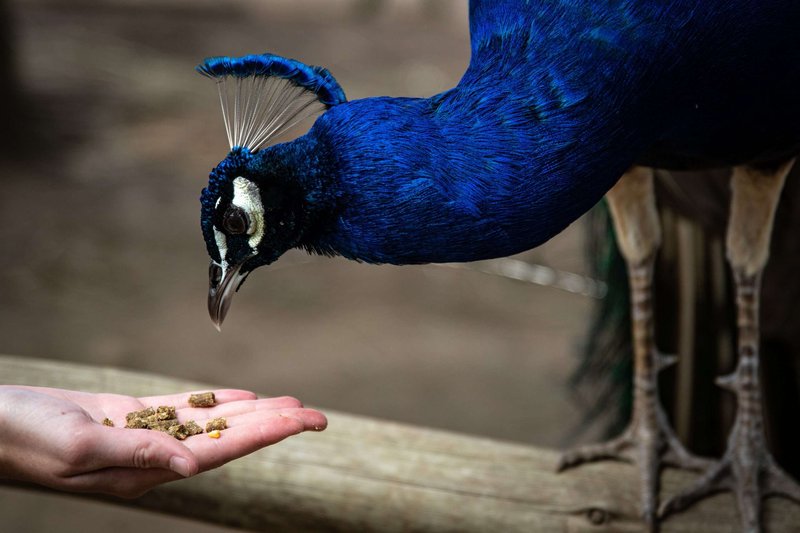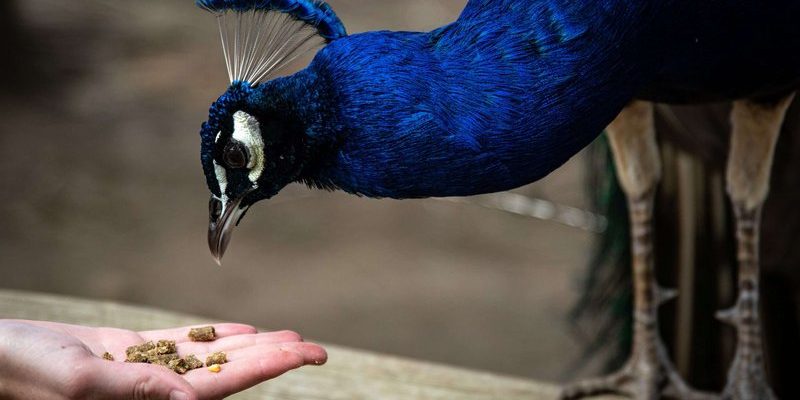
Imagine wandering through a lush, green forest. As you walk, you might notice a few peacocks strutting around, their tails fanned out like colorful flags waving in the breeze. They’re not just showing off; they’re on a mission for food. Peacocks are omnivores, which means they eat a variety of things—from seeds and fruits to insects and small reptiles. This adaptability is key to their survival. Here’s a closer look at their diets and foraging techniques.
What Peacocks Eat
Peacocks have quite the versatile diet. They enjoy a range of foods that can be found in their natural habitats, which mostly include forests, grasslands, and cultivated areas. Here are some common menu items:
- Seeds: Peacocks have a keen eye for seeds scattered on the ground. Whether it’s from grasses or shrubs, they’ll peck at them enthusiastically.
- Fruits: Berries, bananas, and even mangoes can attract these birds. They’re drawn to the bright colors and sweet smells of ripe fruit.
- Insects: Think of them as nature’s little snack; peacocks love munching on crickets, beetles, and grasshoppers.
- Small reptiles: Occasionally, they might hunt for tiny lizards or snakes when they’re feeling a bit adventurous.
- Plants and flowers: Peacocks are also known to nibble on various plants, adding greens to their diet.
You might be wondering why peacocks are drawn to such a wide variety of food. Well, their ability to eat almost anything they find helps them thrive in diverse environments. Remember, adaptability is key!
How Peacocks Forage
Foraging is an art for peacocks, and they have some interesting techniques. They’re not just wandering around aimlessly. Here’s how they go about their daily hunt for food:
1. Visual Scanning: Peacocks have excellent eyesight, which they use to spot food from a distance. They’ll often stand still for a moment, scanning their surroundings like a seasoned detective looking for clues.
2. Ground Scratching: You might see them scratching at the ground with their feet. This behavior helps uncover hidden seeds or insects. It’s like using a tool to dig up a buried treasure.
3. Social Foraging: Peacocks often forage in groups. There’s strength in numbers! They watch each other and may even alert one another to hidden food sources. It’s a community effort, making it easier to find meals.
4. Vocalizing: Did you know that peacocks communicate while foraging? They’ll often call out to each other, letting their buddies know when they spot something yummy. It’s like sharing a secret snack location!
Each foraging technique contributes to their success in finding food. These birds have become masters of searching for sustenance, ensuring they get enough to eat.
The Role of Seasonal Changes
Seasonal changes can influence a peacock’s diet significantly. In spring and summer, when food is abundant, you’ll see them enjoying a variety of fresh fruits and insects. As the seasons transition to autumn and winter, the food supply can dwindle. Here’s how they adapt:
– Autumn foraging: In the fall, peacocks might switch to more robust food sources like seeds and nuts, preparing for colder months ahead.
– Scavenging: During winter, they can be seen scavenging more often. They might visit areas where humans leave food scraps, taking advantage of what’s available.
Adapting their diet with the seasons shows just how resilient they are. It’s like switching up your own meal plan when fresh produce isn’t an option!
The Importance of Water
While we usually think about what peacocks eat, water is just as important. These birds need to stay hydrated, especially during hot months. Here’s how they manage that:
– Finding water sources: Peacocks are often found near lakes, ponds, or rivers. They know where to go for a drink. It’s sort of like having a favorite café where you know the barista makes the best coffee.
– Bathing: Apart from drinking, they also enjoy bathing in shallow water. This helps keep their feathers clean and healthy, which is essential for flight and display purposes.
Water is vital for their health, just like it is for us. Making sure they have access to clean water contributes to their well-being.
Challenges in Finding Food
Despite their adaptability, peacocks still face challenges when it comes to finding food. Here are a few obstacles they might encounter:
– Habitat loss: As human developments expand, the natural habitats of peacocks shrink. This makes it harder for them to find their usual food sources.
– Predation: While they hunt for food, peacocks themselves can become prey. Birds of prey, like eagles or hawks, might target them, especially young or vulnerable individuals.
– Seasonal scarcity: Remember those seasonal changes? In harsh winters or droughts, food becomes scarce, making survival tougher. Peacocks have to be adaptable and resourceful.
Despite these challenges, peacocks continue to thrive in many regions. Their keen foraging skills and diverse diets play a significant role in their survival.
Peacocks are more than just beautiful birds; they are fascinating foragers that navigate their environments with skill and adaptability. From their varied diet of seeds, fruits, and insects to their clever foraging techniques, these birds showcase the wonders of nature’s ingenuity.
Next time you see a peacock strutting about, take a moment to appreciate all the hard work they put into their daily hunt for food. They’re not just flaunting their gorgeous feathers; they’re engaging in a dance of survival, making the most of their surroundings. Understanding what peacocks eat and how they forage reveals so much about the complexity of wildlife and the delicate balance of ecosystems. So, let’s tip our hats to these colorful creatures and their incredible culinary adventures!

